An Assembly of an Experience
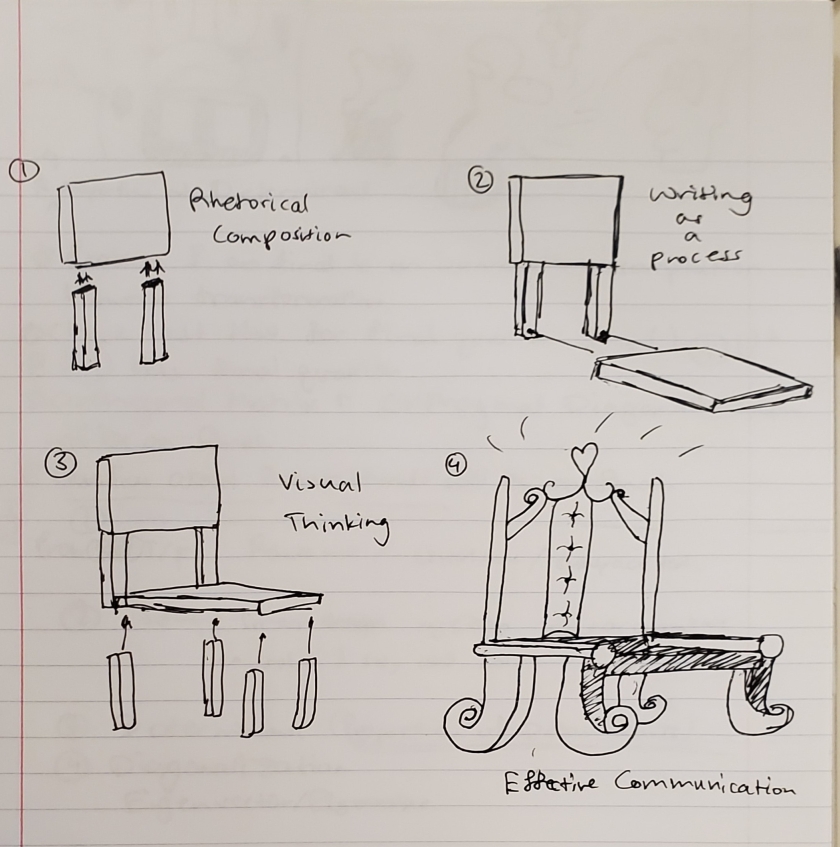
ENGRD101.24. Spring 2022. Emory University

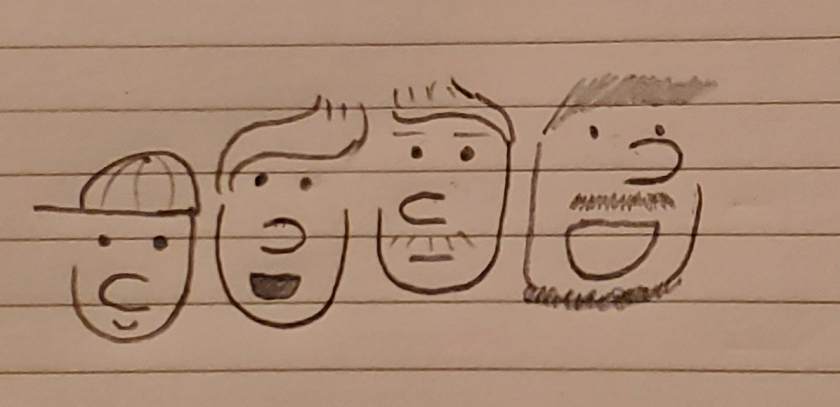
2. Locked Away, R. City, Adam Levine
3. Hall of Fame, The Script
4. Team, Lorde
5. All I Do is Win, DJ Khaled, Snoop Dogg, Ludacris, T pain
6. I Took a Pill In Ibiza, Mike Posner, Seeb
7. Once I was 7 years old, Ben Schuller
8. Don’t Let Me Down, The Chainsmokers
9. Panda, Desiigner
10. Rap God, Eminem
11. This is America, Childish Gambino
12. BabyWipe, Ski mask the Slump God
13. High Hopes, Panic! At the Disco
The rhetorical situation I am engaging with is how to best capture my childhood. The playlist I linked to was a playlist I have had since 6th grade. Since then, I have added songs that I enjoyed listening to at the time. As time passed, the playlist became a record of my personality, my character, and me as a person through music.
The crudely made album cover is a bunch of “me’s” from 6th, 8th, 11th grade, and now. It is to represent my growth throughout the existence of this playlist and the defining periods of my life that were best captured by the playlist.
In reality, this playlist is two and a half hours long so I had to cut it down significantly.


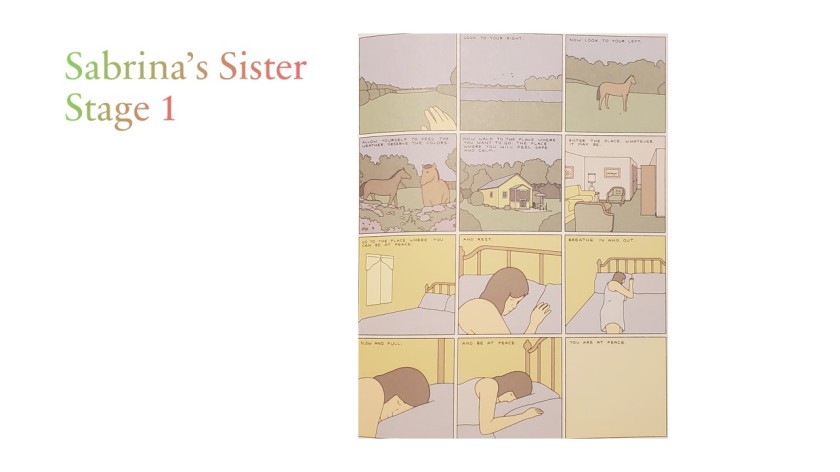


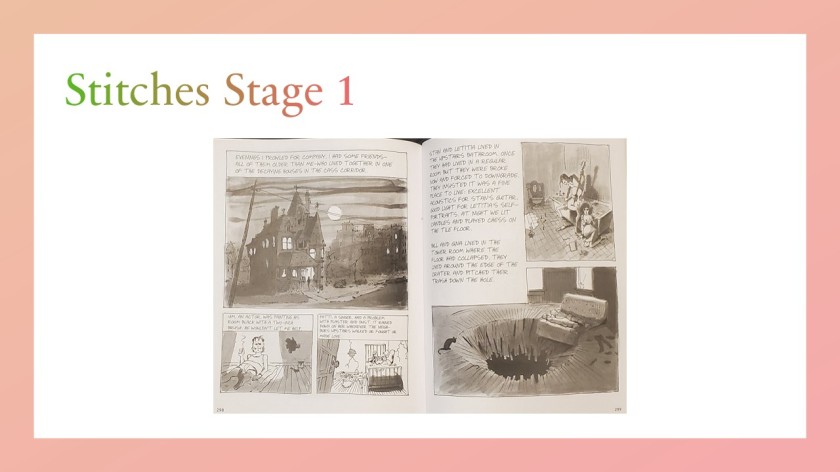

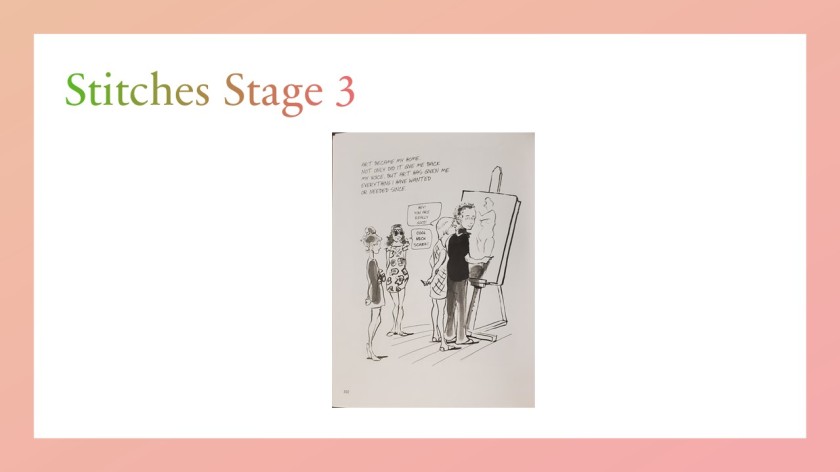


The Halfa Kucha Presentation was eye-opening because it confirmed a long-held suspicion I had regarding my ability to communicate.
I always seemed to talk better than I wrote and it became clear to me while working on the Halfa Kucha that it was in fact the case. While writing essays/papers, I find myself having decent ideas for arguments, however, those thoughts can never stay in my head for more than two seconds before devolving into something incoherent and round – aboutish. When asked to say my arguments out loud, my ideas come together and make sense to a listener whose next question would be, “Why can’t you just write that?”
The Halfa Kucha allowed me to utilize my strength in explanation and verbal communication to make an effective and coherent argument on Stitches and Sabrina’s investigation into trauma and healing.
The process of preparing for the presentation was enjoyable as I had not had to give a speech in front of people in over two years. I was somewhat disappointed in my actual presentation as I felt I prematurely removed certain aspects of my presentation that had helped me during my practice sessions and even some technical difficulties at the beginning threw me off my rhythm.
Regardless, coming back to my first point, I felt my argument came through clearly and everyone was able to understand it well.
The final thing I would like to reflect on is the uniqueness of the Halfa Kucha style of presentation. Forcing myself to stick to a 20-second time limit prevented me from rambling on and making my sentences more concise and informative. Overall, I would love to present in this format again.

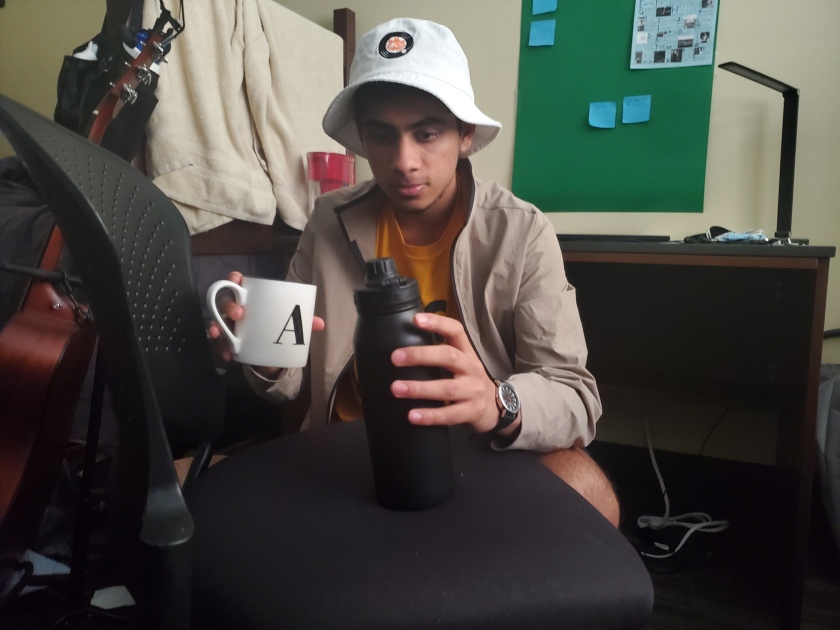
The Indiana Jones series is one of my favorite movie franchises. This scene has always stuck out to me and I thought it would be an easy scene to replicate. It was fun perusing through my closet trying to find the perfect outfit (though not really that perfect) and setting up the entire scene.

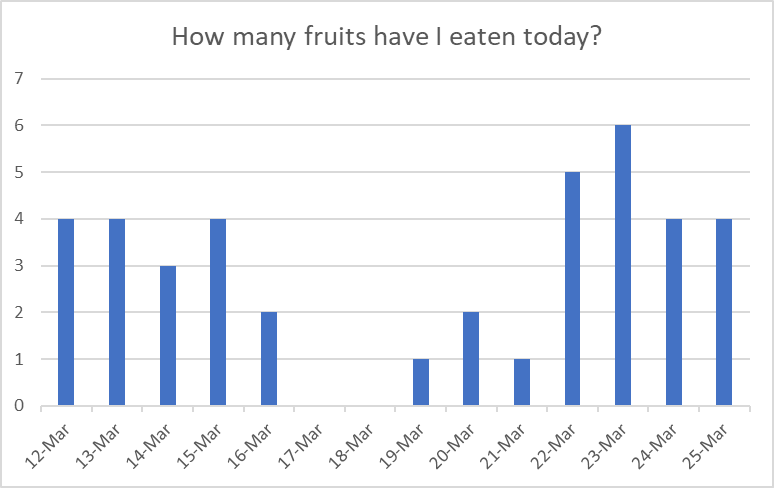
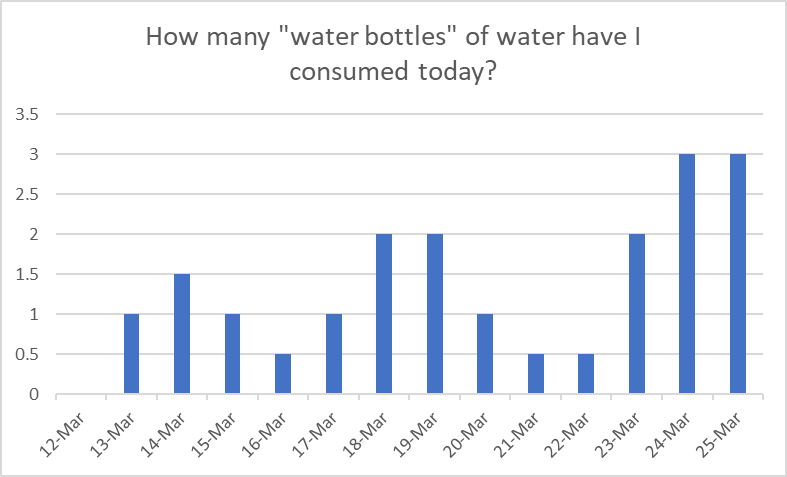
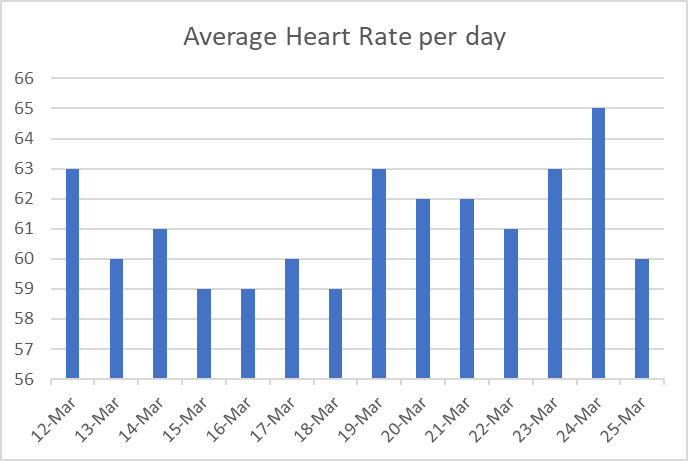


The first five graphs above were hard/explicit metrics I collated over a span of two weeks that I thought could best represent my health every day. The five categories were the amount of times I looked at my phone for more than 3 minutes, how many fruits I had eaten, how much water I had drank, my average heart rate, and the amount of sleep I got the previous night.
By taking these metrics and standardizing them (higher values of negative metrics i.e. times I looked at my phone and heart rate were made negative and vice versa) I was able to create a 0 to 1 range of my health for that day
This is reflected in my sixth graph showing my health per day. It accurately shows my health where, on days where I drank lots of water and ate plenty of fruits, my health was high.
Now looking at the data in front of me, I realize I need to make my health a larger priority and stay consistently high throughout the week. These metrics turned out to be great tools for measuring health because now I know exactly what I need to improve on to increase my health quotient for that day. I was able to effecitvely answer my question of whether my habits were conducive to a healthy lifestyle.
The literacy Narrative process allowed me to explore and grow in the revision and editing process, compose texts in different genres and styles, and collaborate with individuals in the classroom.
I did not particularly like going back to my abc literacy narrative just because I realize how basic and “flat” it was. I generally do not like revisiting old work of mine but doing so allowed me to make the necessary changes to really put it over the top and connect the main idea which, before, did not have an effective bridge.
I see my story as more complete and understandable. Before, only I would have really understood what the essay was trying to convey, however, it was not as clear to others. Now it bridges the gap in logic and is more coherent to other readers.
Having finished this entire process, I feel relieved. Not because the assignment is over or that I did not enjoy the process, but because making a comic is a long and arduous process that, though tiring, is an extremely gratifying thing to accomplish.
Completing this assignment helped me reach the learning outcome pertaining to practicing writing as a process. The comic was preceded by a full-length narrative that was the backbone of this comic. The first Literacy Narrative assignment allowed me to put my ideas to paper and pen and revise them as I saw fit. That process in itself required many steps that built off of each other and this assignment was only a furthering of those steps. Making these many iterations of my essay in every step of the process benefitted my comic greatly.
Going back to the difficulty of making a comic, one thing I heavily underestimated was the visual aspect. As obvious as it was, I did not give much thinking to the details of my drawings. The biggest problem about the visual aspect of my comic was choosing what I wanted to put on paper. I had a million ideas for how to show eight years passing by or what scene from my favorite comics I wanted to depict to demonstrate their sneaky complexity. I was trying to do something profound on every page but I think realizing it was probably better keeping everything simple was the right choice. The storyboard assignment helped slightly with this but even then, I was not entirely happy with my decisions and felt they were made too hastily.
With this in mind we can take a look at my comic and see why I kept in what I did. The first page is highlighted by three comics I used to read early on in my childhood. The first panel consists of three covers of each comic that I distinctly remember from my head. I did not search up images to prompt my memory, I took what I vaguely remembered and drew them out. I did the same thing for the next three panels on the first page with scenes that stuck out to me from each series. On the second page, I decided to show eight years passing by through the height markers from every year in our family room wall; again keeping with the theme of simplicity. The last panel on the last page was the one that involved the most brainstorming. I wanted to end my comic with a visual that aptly summarized my experience with texts from high school and my childhood and shedding it in a positive light. I did this by drawing characters or symbols that represent the texts that I have read (To Kill a Mockingbird, The Great Gatsby, Lord of the Flies, and Amar Chitra Katha to name a few) and surrounded them around a comical version of myself with a light switch substituted for my brain. I wanted to really capture what it felt like for me when that switch “flicked” in my head.
Having finished this entire process, I feel relieved. Not because the assignment is over or that I did not enjoy the process, but because making a comic is a long and arduous process that, though tiring, is an extremely gratifying thing to accomplish.
Completing this assignment helped me reach the learning outcome pertaining to practicing writing as a process. The comic was preceded by a full-length narrative that was the backbone of this comic. The first Literacy Narrative assignment allowed me to put my ideas to paper and pen and revise them as I saw fit. That process in itself required many steps that built off of each other and this assignment was only a furthering of those steps. Making these many iterations of my essay in every step of the process benefitted my comic greatly.
Going back to the difficulty of making a comic, one thing I heavily underestimated was the visual aspect. As obvious as it was, I did not give much thinking to the details of my drawings. The biggest problem about the visual aspect of my comic was choosing what I wanted to put on paper. I had a million ideas for how to show eight years passing by or what scene from my favorite comics I wanted to depict to demonstrate their sneaky complexity. I was trying to do something profound on every page but I think realizing it was probably better keeping everything simple was the right choice. The storyboard assignment helped slightly with this but even then, I was not entirely happy with my decisions and felt they were made too hastily.
With this in mind we can take a look at my comic and see why I kept in what I did. The first page is highlighted by three comics I used to read early on in my childhood. The first panel consists of three covers of each comic that I distinctly remember from my head. I did not search up images to prompt my memory, I took what I vaguely remembered and drew them out. I did the same thing for the next three panels on the first page with scenes that stuck out to me from each series. On the second page, I decided to show eight years passing by through the height markers from every year in our family room wall; again keeping with the theme of simplicity. The last panel on the last page was the one that involved the most brainstorming. I wanted to end my comic with a visual that aptly summarized my experience with texts from high school and my childhood and shedding it in a positive light. I did this by drawing characters or symbols that represent the texts that I have read (To Kill a Mockingbird, The Great Gatsby, Lord of the Flies, and Amar Chitra Katha to name a few) and surrounded them around a comical version of myself with a light switch substituted for my brain. I wanted to really capture what it felt like for me when that switch “flicked” in my head.

Making this Quadtriptych involved a brief reflection of the sort of conversations I have had with people regarding the current situation in Ukraine. Mostly between my roommate and I, these interactions are almost daily where we exclaim at the unfortunate reality in Ukraine and almost immediately switch to something else more pertinent (i.e. homework, getting food, or watching youtube).
I am not trying to make a claim about how normal citizens are supposed to stand up, drop everything they are doing, and take immediate action to end this conflict, but at the same time, it is just bizarre how normal we are with a situation that could very easily escalate into something much larger.